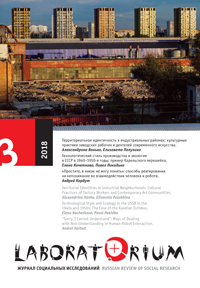“Sorry, I Cannot Understand”: Ways of Dealing with Non-Understanding in Human-Robot Interaction
Main Article Content
Abstract
The article discusses how the non-understanding that arises during human-robot interaction is managed. The focus is on the ways humans respond to the open expression of non-understanding by robots, as well as of non-understanding that the robot itself does not “realize.” The methodological framework of the research is an ethnomethodological conversation analysis that presupposes the identification of the ways of producing local social order in the sequences of actions. By analyzing the conversations between callers and robot (it is actually a chatbot, but official term for it is “robot”) in a Russian telephone information service, I show that, instead of non-understanding being a negative phenomenon consisting in lack of understanding, non-understanding is a situational and coordinated achievement of the participants in the interaction. The article identifies two types of conditions of non-understanding between human and robot: institutional (related to the specific organizational context in which the interaction takes place and which is produced in it) and interactional (related to the organization of interaction).
Based on a detailed analysis of transcripts of human-robot telephone conversations, five ways of responding to non-understandings are distinguished: changes in the acoustic characteristics of utterances (raising the voice level, slowing down, expanding pauses, etc.); expanding the initial statement (for example, by introducing explanatory words); reducing utterances to “key” words; ignoring non-understanding; and adding explanations. At the same time, people not only react to the non-understanding by the robot after its occurrence but also actively anticipate it, building their turns in a way understandable to the robot. The identified features of human-robot interaction provide a more accurate description of human interaction with technical interactional agents, which are becoming increasingly common in everyday life, and also show that non-understanding is not a failure in understanding but a social achievement of the participants in interaction, whether humans or robots. Because non-understanding should be demonstrated and recognized in details and sequences of actions, it is necessary to consider it as an independent interactive phenomenon.
Article in Russian
DOI: 10.25285/2078-1938-2018-10-3-57-78
Keywords
Human-Computer Interaction, Chatbot, Artificial Intelligence, Social Interaction, Call Centers, Ethnomethodology, Conversation Analysis
Abstract 221 | PDF (Русский) Downloads 209

